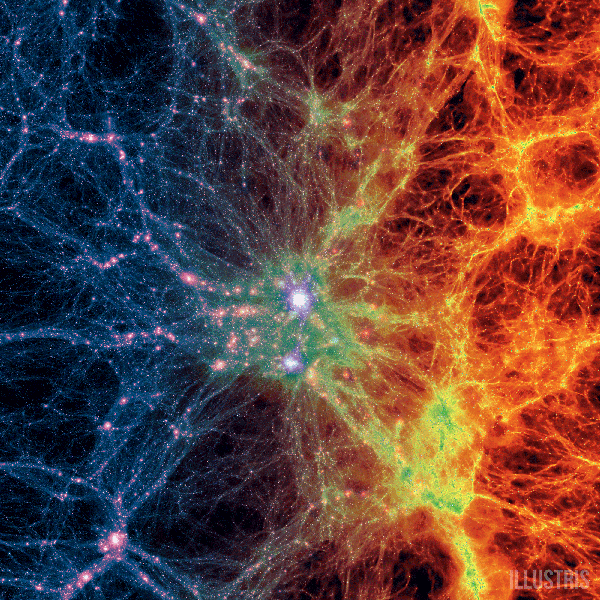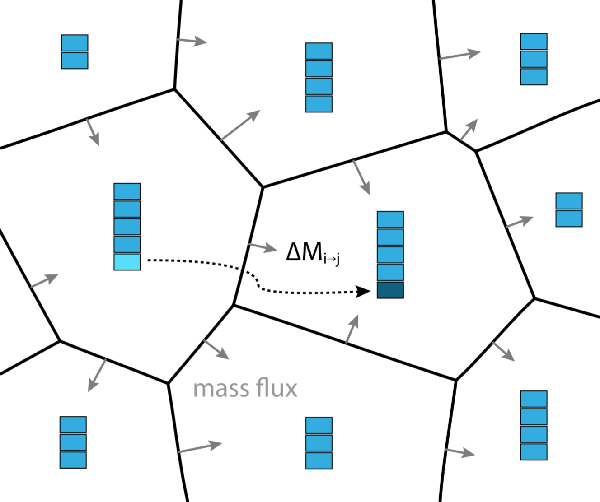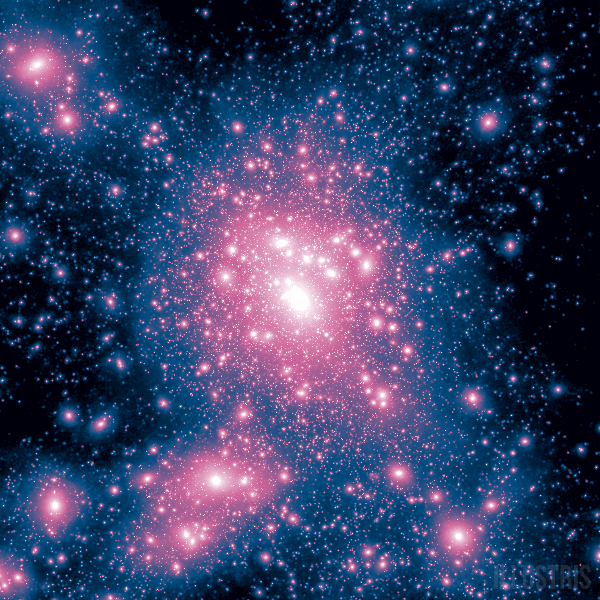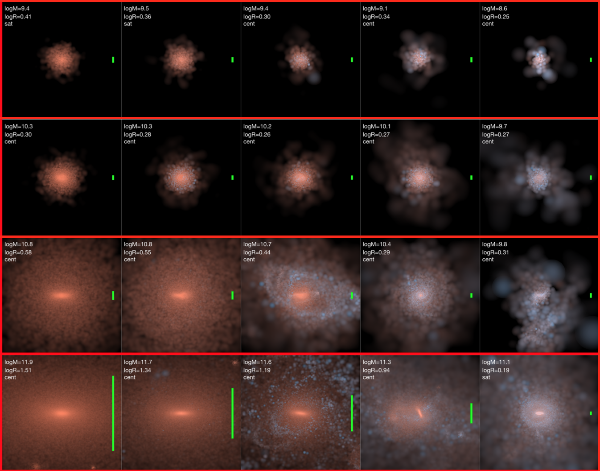Illustris and IllustrisTNG
Some of the largest cosmological hydrodynamical simulations run to date, the Illustris and IllustrisTNG simulations reproduce many observed galaxy properties and allow us to study how galaxies form and evolve.
Tracer particles
Following individual mass elements in mesh-based simulations, such as ones run with the moving-mesh code Arepo, requires Lagrangian tracer particles. Our novel Monte Carlo method overcomes shortcomings of existing methods.
Growth of Dark Matter halos
All galaxies form in the centers of Dark Matter halos, and so the growth of these two types of objects are intimately related. I am interested in how Dark Matter halos grow both via mergers with each other and by smooth accretion.
The CAMELS project
By running thousands of cosmological simulations with a variety of codes, models and parameters, we can train machine learning models to perform tasks such as inferring model parameters (thereby studying cosmology) and emulating the simulation results.
Galaxy size and angular momentum
Cosmological simulations allow us to study how feedback affects the angular momentum content of galaxies, how their sizes evolve over time, and relations between these quantities and galaxy assembly history.
The butterfly effect in galaxy formation
The properties of individual simulated galaxies appear to be quite sensitive to small perturbations in their initial conditions, and this affects the scatter around important galaxy scaling relations. Whether that is the case also in the real Universe remains an open question.





